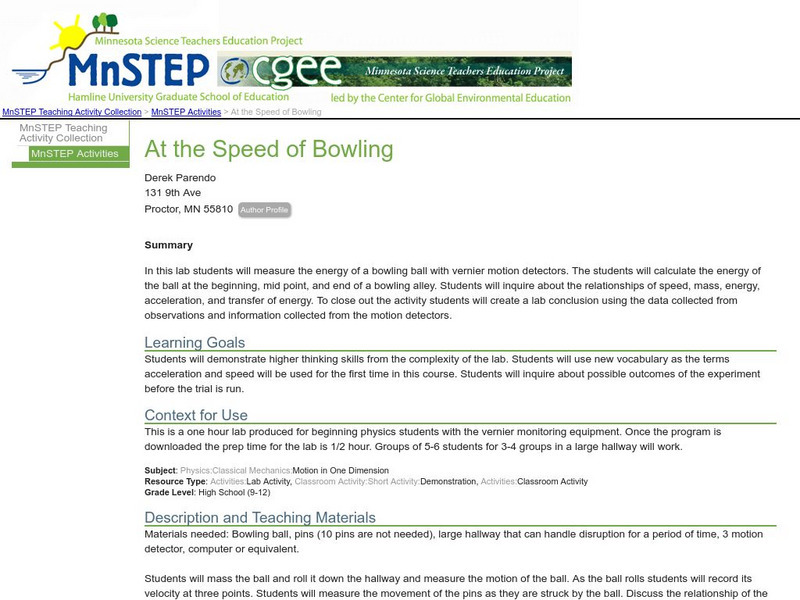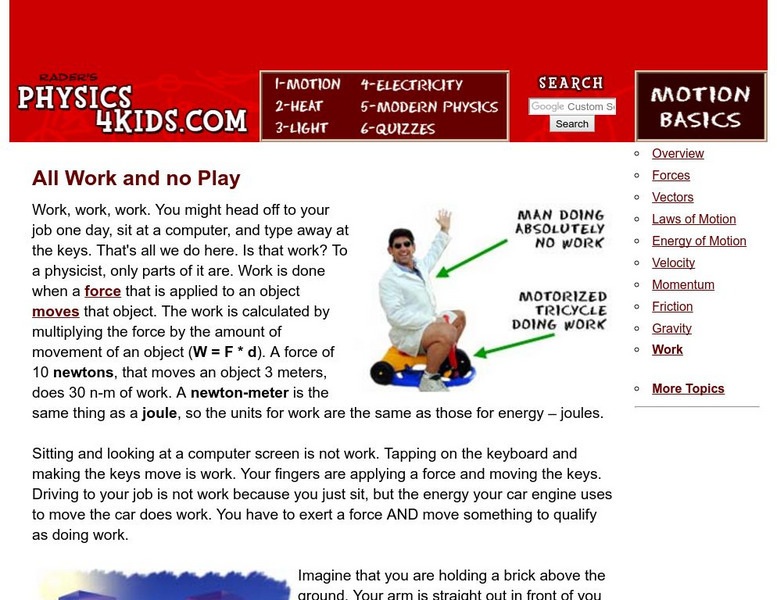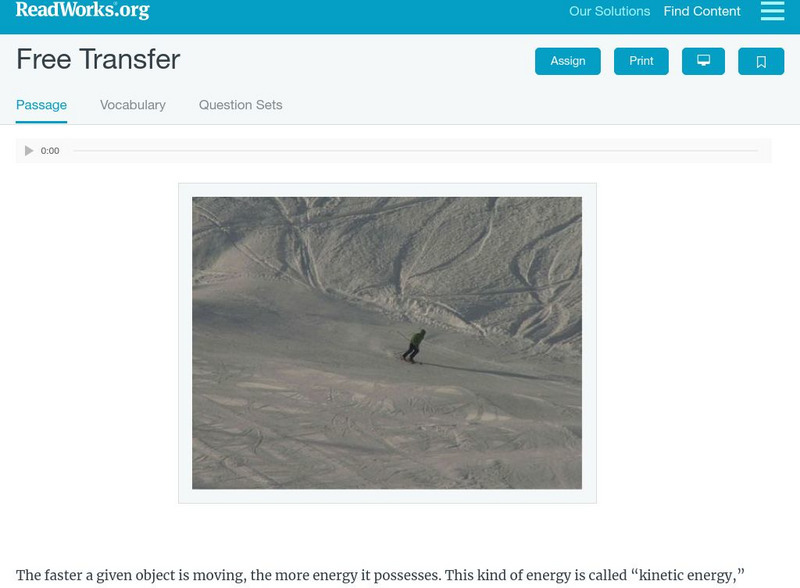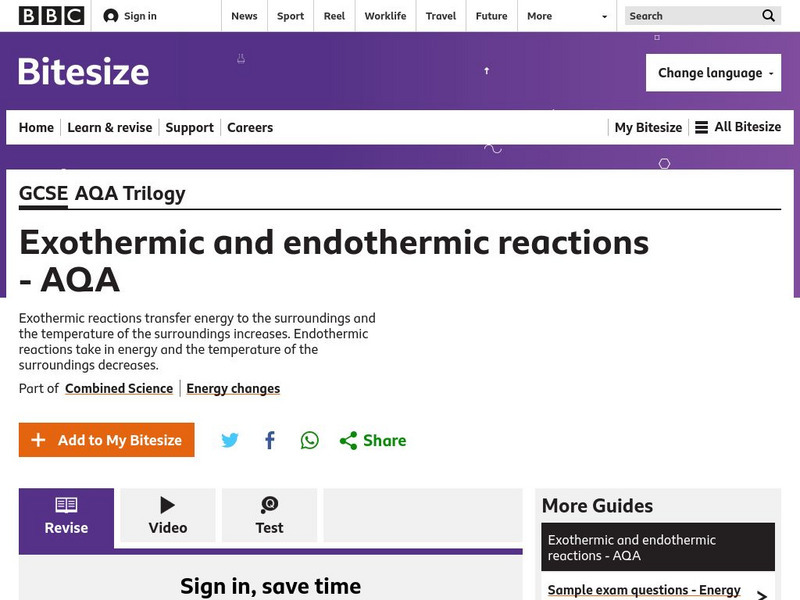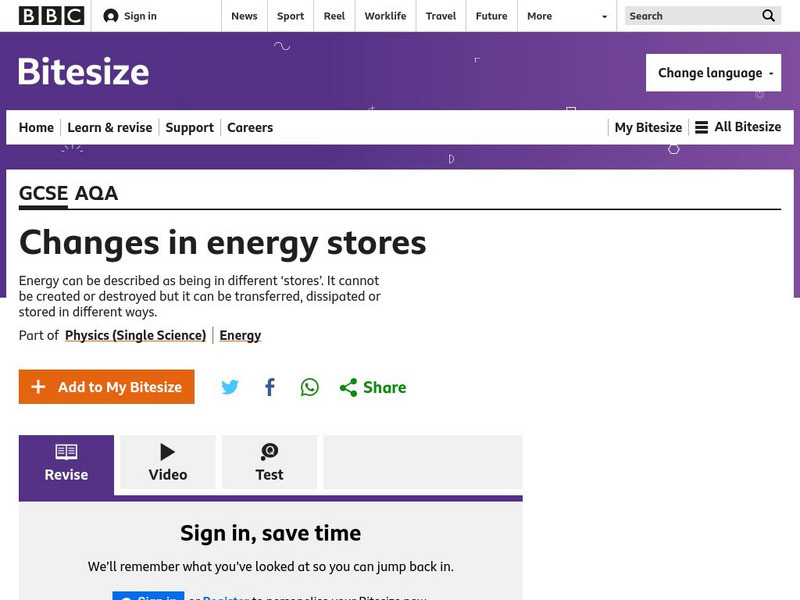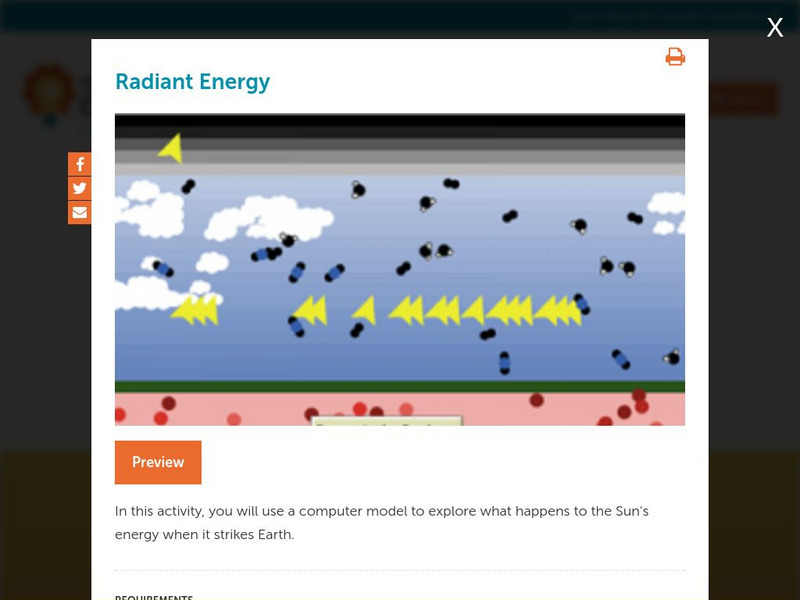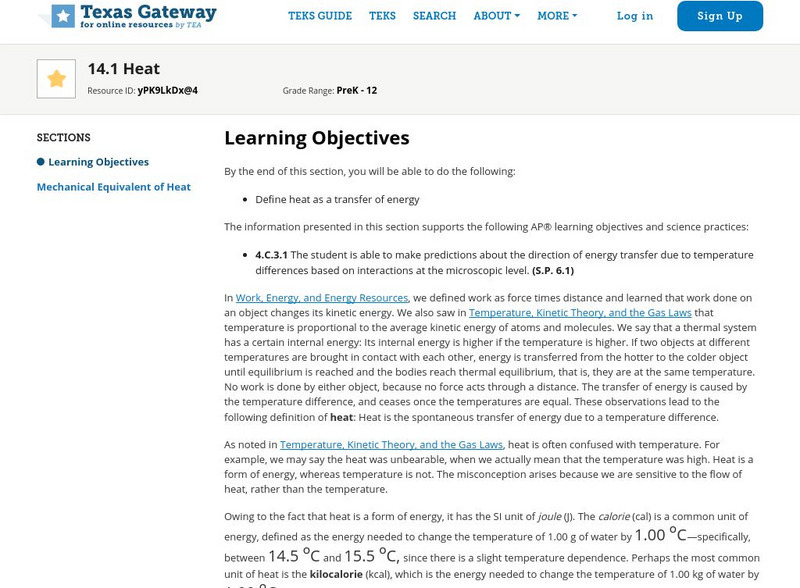University Corporation for Atmospheric Research
Ucar: Cycles of the Earth System: Earth's Energy Cycle: Albedo
Students experiment and observe how the color of materials that cover the Earth affects the amounts of sunlight our planet absorbs.
Concord Consortium
Concord Consortium: Stem Resources: Solar Oven
Use the sun's energy to cook an egg? Design, build and test a solar oven. Activity gives a procedure to build oven as well as questions to answer. Questions can be saved and graded by instructor.
Science Education Resource Center at Carleton College
Serc: At the Speed of Bowling
In this lab students will measure the energy of a bowling ball with vernier motion detectors. The students will calculate the energy of the ball at the beginning, mid point, and end of a bowling alley. Students will inquire about the...
PBS
Pbs Kids: Colored Water Convection
This PBS site allows users to learn more about water convection as they discover how to demonstrate the way convection currents form. A fun science project!
Climate Literacy
Clean: Earth's Albedo
This engaging activity introduces young scholars to the concept of albedo and how it relates to Earth's energy balance. They measure the albedo using maps, data tables, and a shaker filled with popcorn kernels. Then, they estimate the...
Other
California Energy Commission: Solar Energy Science Projects [Pdf]
Four science projects in which students learn how solar energy works and how thermal energy is transferred and utlized in a solar air heater, a solar water heater, a solar hot dog cooker, and a solar cell.
Other
National Engineers Week Foundation: Hearing the Light
Students learn how laser communication systems are built by observing how sound can be encoded into, and transmitted by a light beam.
Physics4kids
Physics4 kids.com: All Work and No Play
The concept of work is addressed in this brief explanation. The transfer of energy is also explained along with the method for measuring work. The resource provides an online quiz to check for understanding.
Read Works
Read Works: Free Transfer
[Free Registration/Login Required] This passage discusses different types of energy transfer. This text is a stand-alone curricular piece that reinforces essential reading skills and strategies and establishes scaffolding for vocabulary...
Discovery Education
Discovery Education: Grade 3 5 Module: Designed for Efficiency [Pdf]
In this 3-5 teaching module, students conduct experiments, explore with online interactives, and watch videos that help them understand how vehicles work. Then, students demonstrate their understanding by designing energy efficient...
Other
American Coal Foundation: Lesson Plan: Generating Electricity From Coal
This two-part lesson plan teaches students about the process of generating electricity from coal and helps them research and discover alternate ways for using coal to produce electricity.
BBC
Bbc: Gcse Bitesize: Exothermic and Endothermic Reactions Aqa
This lesson focuses on Exothermic and Endothermic Reactions. Exothermic reactions transfer energy to the surroundings. Endothermic reactions take in energy from the surroundings. It provides links to a video and a test.
BBC
Bbc: Gcse Bitesize: Changes in Energy Stores
Energy can be described as being in different "stores". It cannot be created or destroyed but it can be transferred, dissipated or stored in different ways. There are seven main stores of energy: magnetic, internal (thermal), chemical,...
Science Struck
Science Struck: 22 Examples of Mechanical Energy
Explains what mechanical energy is and provides 22 examples of it.
Concord Consortium
Concord Consortium: Stem Resources: Radiant Energy Flow
A virtual lab to look at the physical features of Earth that affect the amount of the Sun's energy that hits Earth. Students investigate how solar and infrared radiations enters and leaves the atmosphere with this model. Virtual lab...
Texas Education Agency
Texas Gateway: Heat and Heat Transfer Methods: Heat
By the end of this section, you will be able to do define heat as a transfer of energy.
CK-12 Foundation
Ck 12: Fourth Grade Science: Physical Science: Transfer of Thermal Energy
[Free Registration/Login may be required to access all resource tools.] Describes the conduction of thermal energy, how convection transfers thermal energy, and provides an example of the radiation of thermal energy.
Utah Education Network
Uen: Energy Transfers
Students will model and measure energy transfers from light to heat.
Concord Consortium
Concord Consortium Where Does the Energy of a Spark Come From?
Students define potential energy and explore the relationship between potential energy and field. How does potential energy change when things are pushed or pulled? Where does the energy that was used to charge the Van de Graaff...
Concord Consortium
Concord Consortium What Is Happening When a Spark Occurs? Activity 2: What Happens to Energy When Objects Collide?
An investigation of what happens to energy during changes.
Concord Consortium
Concord Consortium: What Are Factors That Affect How Strongly Objects Interact With Each Other?
Explore and use models of electric fields to explain how charged objects interact with other objects.
Concord Consortium
Concord Consortium Where Does the Energy of a Spark Come From?
Activity 3 investigates Why is lightning so much bigger that a spark from the Van de Graff generator? In Activity 3 of this module, students investigate factors that affect the amount of potential energy that is stored.
Concord Consortium
Concord Consortium Where Does the Energy of a Spark Come From?
Activity 2 of the module investigates Where does the energy used to charge the Van de Graaff generator go? The activity investigates how objects can interact without touching, as well as what happens to potential energy when objects...
Concord Consortium
Concord Consortium What Is Happening When a Spark Occurs?
Activity 1 of this module investigates: How does potential energy change when things are pushed or pulled? Exploring how force is related to potential energy, this activity investigates how potential energy is changed when a spring is...




